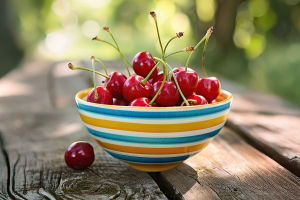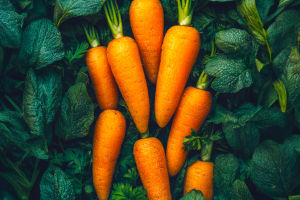Rice: A Global Staple!
Rice is much more than just a side dish. It’s a fundamental food source that nourishes billions worldwide, deeply woven into the cultural and culinary fabric of many societies.
Despite its humble appearance, rice has an incredibly rich history, varied cultivation practices, and nutritional benefits that make it indispensable across continents.
Here’s a deeper into the story of rice, its global influence, and why it's so much more than meets the eye!
Varieties of Rice: More Than Just White and Brown
Rice may seem simple at first glance, but the variety of types available can astonish even the most seasoned cooks. The two primary categories of rice are indica and japonica, which differ primarily in their grain shape and texture.
Beyond these two broad categories, there are many other varieties. For example:
Basmati: Famous for its fragrant aroma, often used in Middle Eastern cuisines.
Arborio: The short-grain rice used in risotto, prized for its creamy texture.
Black Rice: Known as "forbidden rice," this dark-hued variety offers a nutty flavor and is packed with antioxidants.
Jasmine Rice: A fragrant, long-grain rice commonly used in Southeast Asian dishes.
The Health Benefits of Rice: More Than Just Carbs
Rice is often seen as a simple carbohydrate, but its nutritional profile can be quite complex. When consumed in moderation, it provides essential nutrients like iron, vitamin B, and magnesium. Brown rice, being less processed than white rice, retains its bran and germ, which are rich in fiber, promoting digestive health and helping to regulate blood sugar levels. It's also a good source of antioxidants that can reduce the risk of chronic diseases.
For those concerned about calories or seeking a low-fat, gluten-free option, rice is an excellent choice. It is naturally gluten-free, making it a safe staple for individuals with celiac disease or gluten intolerance. It also contains a variety of amino acids, providing a balanced source of plant-based protein when paired with legumes or vegetables.
Rice Cultivation and Sustainability
While rice is crucial to global food security, it’s also a crop that requires a significant amount of water to grow. The traditional method of flooded paddies, which helps control weeds and pests, uses vast amounts of water. However, innovative farming techniques are being developed to make rice cultivation more sustainable.
For instance, System of Rice Intensification (SRI) has been adopted in countries like Vietnam. This method reduces water usage while increasing yields by improving plant spacing, water management, and soil fertility. Additionally, research into drought-resistant rice varieties aims to ensure the crop can withstand changing climate conditions, addressing the growing concerns of water scarcity and global warming.
Rice in Cultural Celebrations
Across the world, rice plays an integral role in cultural celebrations. In Japan, mochi, a sticky rice cake, is a traditional food for New Year's, symbolizing health and prosperity. Similarly, in many Latin American countries, rice is a symbol of life and abundance, often featured in ceremonial meals.
In many cultures, rice is also considered a symbol of fertility, and it’s often used in weddings and other significant events. The tradition of tossing rice at weddings symbolizes prosperity and fertility, a custom that has endured for centuries.
Rice’s ability to adapt to various climates, its rich nutritional profile, and its versatile role in global cuisine make it an irreplaceable staple in many parts of the world. From its deep historical roots to its contemporary importance in food security, rice continues to be a food source that connects people, cultures, and generations.
Understanding the multifaceted nature of rice allows us to appreciate not only its place on our plates but also its impact on our health, economies, and global environment. Whether enjoyed as a simple bowl of steamed rice or incorporated into elaborate culinary creations, rice remains one of the world’s most cherished and essential ingredients.
-
 Cherry: Skin Boost?Can This Juicy Fruit Really Make Skin Glow And Fight Aging? The Truth May Surprise You! Find Out!
Cherry: Skin Boost?Can This Juicy Fruit Really Make Skin Glow And Fight Aging? The Truth May Surprise You! Find Out! -
 Lemon Freshness UnleashedDiscover the Amazing Health Benefits of Lemons and Refreshing Drinks You Can Make Right at Home!
Lemon Freshness UnleashedDiscover the Amazing Health Benefits of Lemons and Refreshing Drinks You Can Make Right at Home! -
 Carrot Health BenefitsDiscover the Surprising Health Benefits of Carrots and Creative Ways to Eat Them!
Carrot Health BenefitsDiscover the Surprising Health Benefits of Carrots and Creative Ways to Eat Them!
Copyright © zogu 2021 - 2025. All Right Reserved.